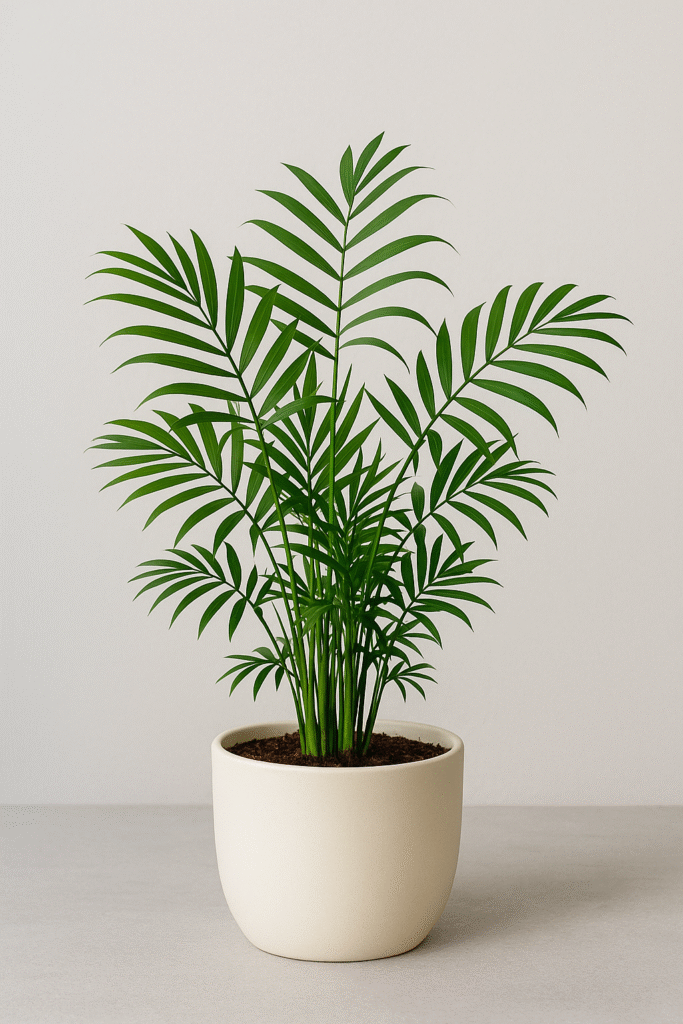The Chamaedorea palm, also known as the parlor palm or bamboo palm, is a popular indoor plant native to the tropical rainforests of Central and South America. With its slender, arching fronds and graceful appearance, this plant has become a favorite for homes, offices, and indoor gardens around the world. In this article, we’ll explore the key features of the Chamaedorea, its most common species, care requirements, and why it’s a great choice for indoor environments.
What is the Chamaedorea Palm?
Belonging to the Arecaceae family, the Chamaedorea genus includes over 100 species of small palm trees. The most widely cultivated is the Chamaedorea elegans, commonly referred to as the parlor palm. These palms are admired for their compact size, slow growth, and ability to thrive in low light.
Typically, Chamaedorea palms grow to a height of 3 to 6 feet (about 1 to 2 meters), making them perfect for tabletops, corners, or floor planters. Their thin, cane-like stems and feather-shaped leaves give them a light, airy appearance that complements a variety of interior styles.
Popular Species of Chamaedorea
While Chamaedorea elegans is the best-known species, several others are also favored by plant enthusiasts:
- Chamaedorea seifrizii – Often used in offices and public spaces, it grows in clusters and has a bamboo-like appearance.
- Chamaedorea metallica – Known for its metallic, dark green leaves with a unique sheen.
- Chamaedorea ernesti-augusti – A rarer variety with large, undivided leaves shaped like a spade.
Each species has its own distinct charm, but all share similar care needs and a tropical elegance that enhances indoor decor.
Benefits of Growing Chamaedorea Indoors
There are several reasons why the Chamaedorea palm is such a popular houseplant:
- Air purifying: According to NASA studies, this palm is effective at removing pollutants like formaldehyde and benzene from the air.
- Low maintenance: It requires minimal care and tolerates low-light conditions well.
- Non-toxic to pets: Safe for homes with cats and dogs.
- Aesthetic value: Adds a lush, green touch that fits modern, boho, or tropical interior themes.
How to Care for a Chamaedorea Palm
Though it’s relatively easy to care for, following some basic guidelines will ensure your Chamaedorea remains healthy and vibrant.
1. Lighting
Chamaedorea palms prefer bright, indirect light but can tolerate low-light environments. Avoid direct sunlight, as it can scorch the delicate leaves. Near east- or north-facing windows is ideal.
2. Watering
Keep the soil slightly moist but never soggy. Allow the top 1–2 inches of soil to dry before watering again. Overwatering can lead to root rot. During winter, reduce the watering frequency.
3. Humidity
Since these palms are tropical by nature, they appreciate higher humidity levels. Mist the leaves occasionally or place the plant on a humidity tray if your home is dry, especially in the colder months.
4. Soil and Pot
Use a well-draining potting mix, ideally a blend of peat moss, perlite, and compost. Ensure the pot has drainage holes to avoid water accumulation.
5. Fertilizing
Feed the plant with a balanced liquid fertilizer (such as 10-10-10) every 4 to 6 weeks during the growing season (spring and summer). Avoid fertilizing in winter.
Common Issues
While Chamaedorea palms are resilient, a few problems may arise:
- Yellowing leaves: Often caused by overwatering or poor drainage.
- Brown tips: Usually due to low humidity or exposure to dry air.
- Pests: Spider mites and mealybugs may appear, especially in dry indoor conditions.
Addressing these issues early with proper care or mild insecticidal soap can keep the plant in top shape.
Propagation
The Chamaedorea palm can be propagated by dividing clumps from the base of the plant. This is typically done during repotting. Each division should have its own roots to thrive independently.
Propagation by seed is also possible but much slower and less commonly done by home growers.
Conclusion
The Chamaedorea palm is a wonderful addition to any indoor plant collection. With its lush, tropical fronds, low maintenance requirements, and air-purifying benefits, it’s easy to see why it has remained popular for decades. Whether you’re a seasoned plant enthusiast or just starting your indoor garden, the parlor palm offers an elegant and hassle-free way to bring greenery into your space.

Upgrade Your Gardening Game
Discover the Kynup 7-Piece Garden Tools Set – crafted with rust-proof stainless steel and durable aluminum alloy for long-lasting performance. Perfect for planting, weeding, pruning, and more. An ideal gift for gardening lovers!
Shop Now on AmazonExplore the Beauty of Rosewood
Dive into the fascinating story of Rosewood – the aromatic jewel of the Amazon Rainforest. Discover its unique fragrance, cultural significance, and the vital role it plays in the rainforest ecosystem.
Read More
